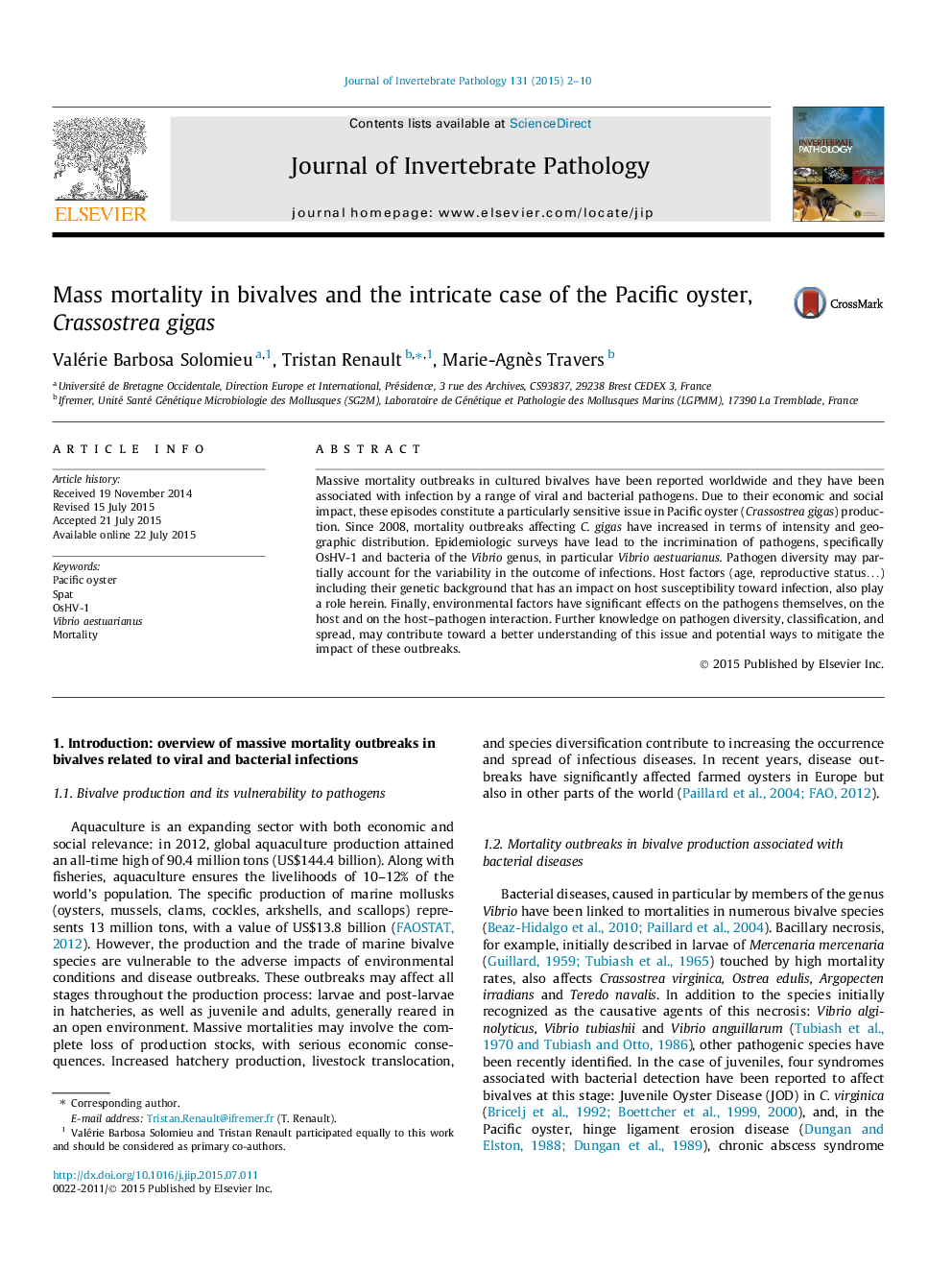| Article ID | Journal | Published Year | Pages | File Type |
|---|---|---|---|---|
| 4557528 | Journal of Invertebrate Pathology | 2015 | 9 Pages |
•Bivalve production and trade are harmed by recurrent mortality outbreaks.•In C. gigas, outbreaks have increased (intensity and geographic area) since 2008.•Pathogens have been incriminated, particularly OsHV-1 and Vibrio aestuarianus.•Host/pathogen and environmental factors affect the outcome of such infections.•Mitigation of their impact requires additional data on pathogen diversity and spread.
Massive mortality outbreaks in cultured bivalves have been reported worldwide and they have been associated with infection by a range of viral and bacterial pathogens. Due to their economic and social impact, these episodes constitute a particularly sensitive issue in Pacific oyster (Crassostrea gigas) production. Since 2008, mortality outbreaks affecting C. gigas have increased in terms of intensity and geographic distribution. Epidemiologic surveys have lead to the incrimination of pathogens, specifically OsHV-1 and bacteria of the Vibrio genus, in particular Vibrio aestuarianus. Pathogen diversity may partially account for the variability in the outcome of infections. Host factors (age, reproductive status…) including their genetic background that has an impact on host susceptibility toward infection, also play a role herein. Finally, environmental factors have significant effects on the pathogens themselves, on the host and on the host–pathogen interaction. Further knowledge on pathogen diversity, classification, and spread, may contribute toward a better understanding of this issue and potential ways to mitigate the impact of these outbreaks.
Graphical abstractFigure optionsDownload full-size imageDownload as PowerPoint slide
